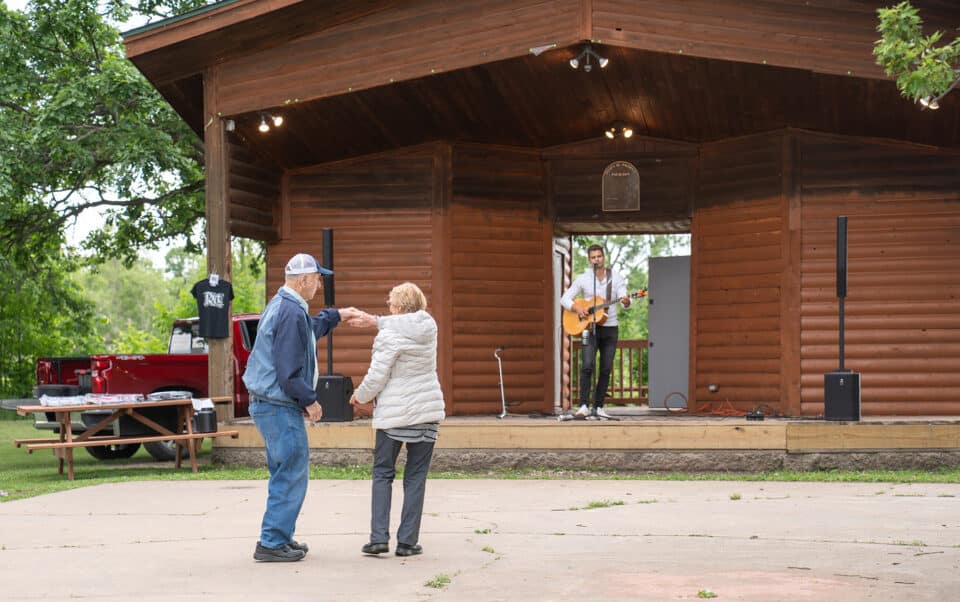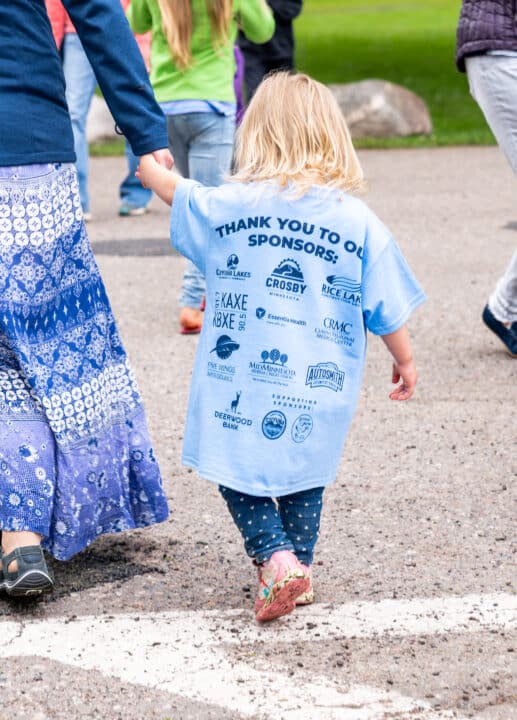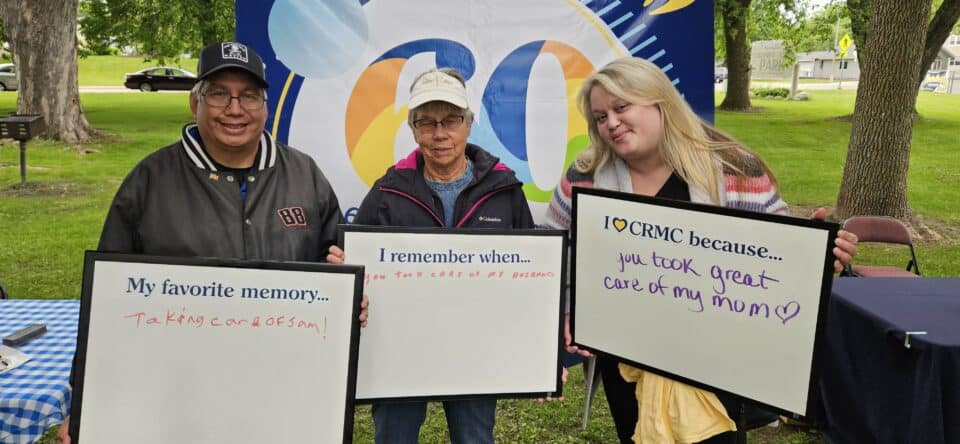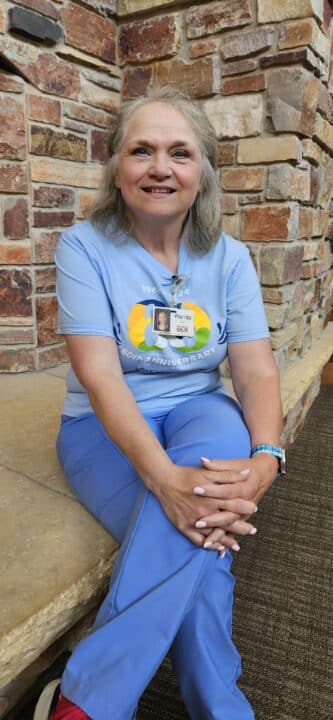60 Years of Excellence: An Unforgettable Celebration
 Hundreds joined us at Crosby Memorial Park on June 6, 2024, to celebrate our 60th anniversary. The event provided an excellent opportunity to connect with the community, which CEO Amy Hart emphasized has always been the lifeblood of the medical facility.
Hundreds joined us at Crosby Memorial Park on June 6, 2024, to celebrate our 60th anniversary. The event provided an excellent opportunity to connect with the community, which CEO Amy Hart emphasized has always been the lifeblood of the medical facility.
“Our relationship with the community is extremely important, and when we think of community, our community is much larger than just Crosby-Ironton. We have about 20 percent of the population that we serve that comes from out-state Minnesota; people are traveling from the Twin Cities to us because of the services they can receive and the type of care they can get.”
Cuyuna Regional Medical Center (CRMC), is a community-built hospital, created by and for the community. Its rich history began in the late 1950s when Miner’s Hospital closed as the iron mines slowed. Seventeen Cuyuna Range cities and townships united to build a new hospital, ensuring high-quality, independent healthcare remained local. The new district hospital opened in 1964, with CRMC employee Wanda Barnes being one of the first babies born there.
 “My chart number is 249. I was the 249th patient to come through the hospital. I was born in July of 1964.” CRMC has always been a part of Barnes’s life. “When I was just 13 years old, I had cancer, and Dr. Marshall did my surgery. I’d return a few years later, at the age of 16, to work as a nursing assistant. I learned to treat everybody how I would want to be treated and that is how it has been for the 43-years I’ve been a nurse.” Barnes now works full-time in the Oncology Department as a Registered Nurse. Her story is like that of many other Cuyuna Range natives, including Mary Novotny. Born and raised here, she proudly works in the community she calls home.
“My chart number is 249. I was the 249th patient to come through the hospital. I was born in July of 1964.” CRMC has always been a part of Barnes’s life. “When I was just 13 years old, I had cancer, and Dr. Marshall did my surgery. I’d return a few years later, at the age of 16, to work as a nursing assistant. I learned to treat everybody how I would want to be treated and that is how it has been for the 43-years I’ve been a nurse.” Barnes now works full-time in the Oncology Department as a Registered Nurse. Her story is like that of many other Cuyuna Range natives, including Mary Novotny. Born and raised here, she proudly works in the community she calls home.
“I was born in October 1963; I was probably one of the last babies born at Miner’s Hospital. It’s priceless to work and live in the community where I grew up. I know a lot of people in the area; you can put a more personable touch on things. People feel more comfortable when they know the person they are working with.”
Novotny would start her career with the healthcare facility as a student working in dietary, but she would only stay there for a short time. “A job became available, and I moved into the business office. I went home crying the first day and said I was never coming back.” Laughing, Novotny recalls that her mom said just to give it a chance; it would get better. It turns out that mother knows best, fast-forwarding from the early 1980s to today. “I don’t know what makes this place so special other than that it is my home. I don’t know how else to put it.”
One of her primary duties during the early years of her career was registering patients. “I remember when we had to enter a patient to the hospital on a three-carbon form typewriter. We thought it was amazing when we got a typewriter that allowed us to program where we wanted the tab to go. Eventually, we’d get a computer.” The technology isn’t the only change that Novotny has witnessed throughout the years, lots and lots of construction. “The biggest thing, I think, was the clinic and the hospital merging – that was a big change staff-wise and building-wise. They were originally separate buildings, and eventually, they built an unheated tunnel between them before the old clinic was torn down and the new one opened.”
Another Miner’s baby, Jon Hendrickson, is the Night Shift Supervisor at the Care Center. In October, he will have been at CRMC for 48 years, starting at 16 as an Orderly in the hospital. “We offered high-quality care, and people enjoyed it. People took ownership of what they did. You knew there were standards, and we’ve maintained that.”
Jon recalls the growth that CRMC has experienced. “When I first came here, we just had a small hospital. ICU was just a few rooms, medical-surgical nursing, obstetrics, and the emergency department. I remember when Dr. Rosenbaum first came here, he was always so happy and positive. It was the 4th of July, and you called a doctor if you needed them, but we weren’t staffed. He had a line of people from the nurse’s station down the hallway and out the front door waiting, probably 75 people in line to be seen.” Dr. Rosenbaum started in July 1977 and retired after 40 years in July 2017.
“We are really known for that community interest and compassion that people have for healing people. It’s important to have all the new technology but also to have basic standards. When people are hurting, and you’re sick and dying, you want someone to clean you up without judging you or passing judgment on you – and helping you. This job keeps you balanced. I would never trade this for anything,” said Hendrickson.
While there have been technological, structural, and staffing changes throughout the decades, one thing has remained constant and will remain: “People want to come here, not just because of how they are treated medically but also because of how their heart and soul and their family are treated. That’s why people come to us and it’s also why they want to work for CRMC,” said Hart.
































